Ba9.2
Once again. The beginning should have the Tail of the Goat
at the back side, and this idea was evidently transmitted down
through the millenia:

|
BABYLONIAN ECLIPTIC
CONSTELLATIONS: |
|
26 |
Mahar sha hi-na
Shahū |
Western One in the
Tail of the Goat |
γ (Nashira)
Capricorni |
328.0 |
Febr 12 (43) |
|
27 |
Arkat sha hi-na
Shahū |
Eastern One in the
Tail of the Goat |
δ (Deneb Algiedi)
Capricorni |
329.8 |
Febr 13 (44) |
| |
|
0 |
1-iku |
Field measure |
τ
(Anunitum)
Piscium |
16.5 |
April 6 (96) |
| |
|
1 |
Mahrū-sha-rishu-ku |
Front of the Head of
Ku |
β (Sheratan),
γ (Mesarthim) Arietis |
27.4 |
April 17 (107) |
|
2 |
Arku-sha-rishu-ku |
Back of the Head of
Ku |
α (Hamal)
Arietis |
30.5 |
April 20 (110) |
| |
|
3 |
Temennu |
Foundation Stone |
η (Alcyone)
Tauri |
56.1 |
May 16 (136) |
|
4 |
Pidnu-sha-Shame |
Furrow of Heaven |
α (Aldebaran)
Tauri |
68.2 |
May 28 (148) |
|
5 |
Shur-narkabti-sha-iltanu |
Star in the Bull
towards the north |
β (El Nath)
Tauri |
80.9 |
June 9 (160) |
|
6 |
Shur-narkabti-sha-shūtū |
Star in the Bull
towards the south |
ζ (Heavenly Gate)
Tauri |
84.0 |
June 13 (164) |
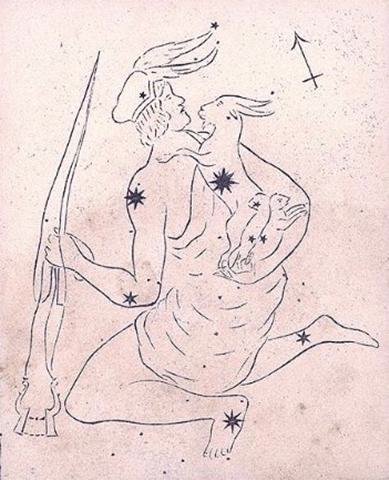
But in the B text Nashira followed by Algiedi did not
arrive until Ba2-25 (alluding to the preceding day 225 = August
13 = 4 Ahaw 8 Kumk'u):
|
VISIBLE CLOSE TO
THE FULL MOON: |
|
no glyph |
HAEDUS I
|
*74 |
June 3 (154) |
71 |
ε LEONIS |
*146 |
Aug 14 (226) |
|
INVISIBLY CLOSE
TO THE SUN: |
|
Ba2-25 |
CUJAM |
*256 |
Dec 3 (337) |
71 |
NASHIRA |
*328 |
Febr 12 (408) |
|
Febr 12 (365 + 43
= 408) =
June 3
(154) +
254 =
June 3
(154)
- 111. |
Here Metoro said we should count (hia). Following
his advice I have now updated and corrected
my earlier presentation.
 |
 |
 |
 |
 |
 |
|
Ba2-25 (254 - 182) |
Ba2-26 (73) |
Ba2-27 → π |
Ba2-28 |
Ba2-29 |
Ba2-30 (78 - 1) |
|
ku hukahuka
hia ia - ki to
maro |
ko te marama o te nuku |
kua haú i te haú o te nuku |
kua tuu i te hau o te heu |
E tagata ere e, ka
uga koe |
ki to
maitaki |
|
... ku hú á te huka-huka, ku
herohero á i roto i te ahi, burning wood shows
red in the fire ...

225 (August 13) - 64 = 161 (JUNE
10): Midsummer is the flowering
season of the oak, which is the tree of endurance
and triumph, and like the ash is said to 'court the
lightning flash'. Its roots are believed to extend
as deep underground as its branches rise in the air
- Virgil mentions this - which makes it emblematic
of a god whose law runs both in Heaven and in the
Underworld ... The month, which takes its name from
Juppiter the oak-god, begins on June 10th and ends
of July 7th. Midway comes St. John's Day, June 24th,
the day on which the oak-king was sacrificially
burned alive. The Celtic year was divided into two
halves with the second half beginning in July,
apparently after a seven-day wake, or funeral feast,
in the oak-king's honour ...
Kere.
To moor, to make fast. Kerekere, black,
dark, blue, obscure, gloom; niho kerekere,
blackened teeth. Hakakerekere, to blacken. P
Pau.: kerekere, black, dark, somber. Mgv.:
kerekere, blue, dark blue almost black, the
color of the deep ocean, black, somber, darkness.
Mq.: kerekere, keékeé, black, somber,
livid; ere, blue, azure. Ta.: ereere,
black. Churchill.
Uga. 1.
To send, to descpatch, to exhort, to deegate, to
excite, to admit, to expel (huga);
huga mai,
to bring in; hakauga,
to instigate, to intrigue, to conduct, to bring, to
congratulate. T Mgv.:
uga, to send, to despatch. Mq.:
una,
uka, to
send a message, to urge. Ta.:
ua, to
expel, to chase. 2.
Ugamoa, thin, leanness (hugamoa).
3. (Ugauaga)
Hakaugauga,
relaxed. Churchill. |
|
VISIBLE CLOSE TO
THE FULL MOON: |
|
JUNE 11 (162) |
12 (227
- 64) |
13 |
14 |
15 |
16 |
|
5 Imix 9
Kumk'u
Rishu A.-13 (Head of the Lion)
ψ
Leonis (146.4),
RAS ELASET
AUSTRALIS = ε Leonis
(146.6)
*105.0 = *146.4 - *41.4 |
VATHORZ PRIOR = υ Carinae
(147.9) |
υ¹
Hydrae (148.4), RAS ELASET BOREALIS (Northern Head
of the Lion) =
μ
Leonis
(148.7)
*107.0 = *148.4 - *41.4 |
TSEEN KE (Heaven's Record) =
φ
Velorum
(149.9) |
ν Leonis
(150.1), π Leonis (150.6) |
υ²
Hydrae (151.8) |
|
Aug 14 (*146) |
15 (227 → π) |
16 |
17 |
18 |
19 |
|
"July 4 (*105) |
5 (186
= 227 - 41) |
6 |
7 |
8 |
9 |
|
INVISIBLY CLOSE
TO THE SUN: |
|
DEC 10 (344) |
11 (409 - 64) |
12 |
LUCIA |
14 (348 = 12 *
29) |
15 |
|
Mahar sha hi-na Shahū-26 (Western One in the Tail of
the Goat)
NASHIRA = γ Capricorni
(328.0),
ν
Oct. (328.3),
AZELFAFAGE =
π¹
Cygni,
κ
Capricorni (328.7) |
Arkat sha hi-na Shahū-27 (Eastern One in the Tail of
the Goat)
ENIF (The Nose) =
ε
Pegasi, ERAKIS =
μ
Cephei
(329.2),
46 CAPRICORNI, JIH (the Sun) =
κ
Pegasi
(329.3),
ι
Piscis Austrini (329.4),
λ
Capricorni (329.6),
ν
Cephei (329.7),
DENEB ALGIEDI = δ Capricorni
(329.8)
*288.0 = *329.4 - *41.4 |
θ
Piscis Austrini (330.1),
λ
Oct.
(330.7) |
KUH (Weeping)
= μ Capricorni (331.4),
γ
Gruis (331.5)
*290.0 = *331.4 - *41.4 |
No star listed (300 + 32) |
η
Piscis Austrini (333.4)
*292.0 = *333.4 - *41.4 |
|
Febr 12
(408) |
13 (365 + 44) |
All
Hearts' Day |
15 (80 + 331) |
16 (365 + 31 +
16) |
17 (14 * 29½) |
|
"Jan 2 (43 - 41)
|
3 (368) |
4 |
5 (80 +
290) |
6 |
7 |

... Even the Maori custom of weeping over friends
when they arrive instead of when they depart has a
certain logic that is not beyond our comprehension
... |
The figure in Ba2-29 presumably meant a new season was
arriving, because here Metoro began with a new
Capital (Head).
Half a year (182 glyphs) later (72 + 182 = 254) we ought once again
to find Nashira and Algiedi, but this time visible
close to the Full Moon. February 12 (43) + 182 = 225 (August
13). Also here I have updated my
previous presentation:
 |
 |
 |
 |
 |
 |
|
Ba6-44 |
Ba7-1 |
Ba7-2 |
Ba7-3 (254) |
Ba7-4 |
Ba7-5 |
|
e tagata hoko |
ki te kea e |
kua rere te manu ki ruga |
o te tagata - koia kua
vaha mea |
ko te
tao kua mau - i te ika |
eko te
tao - kua here
ki te ika |
|
 |
7 |
 |
 |
2 |
 |
|
Ba6-35 (242 = ⅔ * 363) |
Ba6-43 (324 - 74 = 250) |
Ba6-44 |
Ba7-3 (254) |
|
μ Aquarii (*316.0)
Jan 31 (396) = 213 + 183 |
e tagata
mau - i te
vaha mea
Febr 8 (39 = 404)
Aug 9 (404 - 183 = 221) |
SADALSUD
(*325)
Febr 9 (40 = 405) |
NASHIRA (*328) |
|
Febr 12 (43) |
|
Aug 1 (213 = 265 - 52) = 396 - 183
LUGHNASADH |
Febr 10 (40 + 182 = 222)
AL-PHARD → Das Pferd |
Aug 13 (225)
ι
Hydrae (*145) |
|
θ
Pyxidis (141.5),
MARKAB VELORUM = κ Velorum
(141.5),
AL MINHAR AL ASAD (The Nose of the
Lion) =
κ
Leonis
(141.6),
λ
Pyxidis (141.9) |
UKDAH (THE KNOT)
... The orbit of the
Earth around the Sun had remarkably
not been designed to be a perfect
circle. ... It rained for 40 days
and 40 nights, and 40 + 40 = 80 (0h)
... 288 (Tangaroa
Uri 15) - Hora Nui 2
(245) = 43 ...
The topknot was
the most sacred part of a person,
and only men had them ... |
|
|
Tao. 1. To cook in an oven, to
sacrifice. P Mgv., Mq., Ta.: tao, to cook
in an oven. 2. To carry away. 3. Abscess, bubo,
scrofula, boil, gangrene, ulcer, inflammation,
sore. Mgv.: taotaovere, small red spots
showing the approach of death. Mq.: toopuku,
toopuu, boil, wart, tumor. Ta.: taapu,
taapuu, scrofula on neck and chin. 4.
Mgv.: a lance, spear. Ta.: tao, id. Sa.:
tao, id. Ma.: tao, id. 5. Mgv.:
taotaoama, a fish. Sa.: taotaoama,
id. 6. Ta.: taoa, property, possessions.
Ma.: taonga, property, treasure.
Churchill. Sa.: tao, to bake;
taofono, taona'i, to bake food the
day before it is used; tau, the leaves
used to cover an oven. To.: tao, to cook
food in a oven, to bake. Fu.: taò, to put
in an oven, to cook. Niuē:
tao,
to bake. Uvea: tao,
to cook, to bake. Ma., Rapanui: tao,
to bake or cook in a native oven, properly to
steam, to boil with steam. Ta.: tao,
the rocks and leaves with which a pig is covered
when cooking; baked, boiled, cooked. Mq., Mgv.,
Mg., Tongareva: tao,
to bake in an oven ... The word refers to the
specific manner of cookery which involves the
pit oven. The suggestion in the Maori,
therefore, does not mean a different method; it
is but an attempt more precisely to describe the
kitchen method, a very tasty cookery, be it
said. The suggestion of boiling is found only in
Tahiti, yet in his dictionary Bishop Jaussen
does not record it under the word
bouillir;
boiling was little known to the Polynesians
before the European introduction of pottery and
other fire-resisting utensils ... Churchill 2.
Kao-kao, v.
Haw., be red. Root and primary meaning obsolete
in Haw. Sam., tao,
to bake. Marqu., tao,
bake, roast, sacrifice. Tah., tao,
baked, boiled, cooked. Greek, καιω,
Old Att. καω,
to light, kindle, burn, scorch. According to
Liddell and Scott, Pott refers καιω
to Sanskrit çush,
be dry, but Curtius rejects this. In Dravid.
(Tamil) kay,
to be hot, burn. Fornander.
Here. 1. To catch eels in
a snare of sliding knots; pole used in this
manner of fishing, with a perforation for the
line. 2. To tie, to fasten, to lash; rasp made
of a piece of obsidian with one rough side;
cable, tie; figuratively: pact, treatise.
Vanaga. 1. To lash, to belay, to knot the end of
a cord, to lace, to tie, to fasten, to knot; to
catch in a noose, to strangle, to garrote;
here pepe, to saddle; moa herea, a
trussed fowl; hehere, collar, necklet;
herega, bond, ligament; heregao,
scarf, cravat. 2. Hakahere. To buy, to
sell, to barter, to part with, to pay for, to do
business, to compensate, to owe, to disburse, to
expiate, to indemnify, to rent out, to hire, to
traffic, to bargain, to bribe; merchant, trader,
business, revenge; tagata hakahere,
merchant, trader; hakahere ki te ika, to
avenge; hakaherega, ransom, redemption;
hakahererua, to exchange, to avenge. 3.
Here ei hoiho, incense. Churchill.
Hereke, festering wound, cracked skin.
Barthel 2. |
|
VISIBLE CLOSE
TO THE FULL MOON: |
|
DEC 7 |
8 |
9 (7 * 7 * 7) |
10 (344) |
11 |
12 |
|
Al Sa'd al Su'ud-22
(Luckiest of the Lucky) /
Emptiness-11 (Rat)
TSIN = 36 Capricorni
(325.2),
ALPHIRK (The Flock) =
β
Cephei
(325.7),
SADALSUD =
β
Aquarii,
ξ
Gruis (325.9) |
No star listed (326) |
CASTRA = ε Capricorni
(327.2),
BUNDA = ξ Aquarii
(327.5)
SIRIUS (α Canis Majoris) |
Mahar sha hi-na Shahū-26
(Western One in the Tail of the Goat)
NASHIRA =
γ
Capricorni
(328.0),
ν
Oct. (328.3),
AZELFAFAGE =
π¹
Cygni,
κ
Capricorni (328.7) |
Arkat sha hi-na Shahū-27 (Eastern One in the
Tail of the Goat)
ENIF (The Nose) =
ε
Pegasi, ERAKIS =
μ
Cephei
(329.2),
46 CAPRICORNI, JIH (the Sun) =
κ
Pegasi
(329.3),
ι
Piscis Austrini (329.4),
λ
Capricorni (329.6),
ν
Cephei (329.7),
DENEB ALGIEDI (Tail of the Goat) =
δ
Capricorni
(329.8)
*288.0 = *329.4 - *41.4 |
θ
Piscis Austrini (330.1),
λ
Oct.
(330.7) |
|
BUNDA (THE
FOUNDATION) |

... In China, with
Capricornus, Pisces, and a part of Sagittarius,
it [Aquarius] constituted the early Serpent, or
Turtle, Tien Yuen; and later was known as
Hiuen Ying, the Dark Warrior and Hero, or
Darkly Flourishing One, the Hiuen Wu, or
Hiuen Heaou, of the Han dynasty, which
Dupuis gave as Hiven Mao. It was a symbol
of the emperor Tchoun Hin, in whose reign
was a great deluge; but after the Jesuits came
in it became Paou Ping, the Precious
Vase. It contained three of the sieu, and headed
the list of zodiac signs as the Rat,
which in the far East was the ideograph for
'water', and still so remains in the almanacs of
Central Asia, Cochin China, and Japan
... |
|
Febr 9 (40) |
10 |
11 |
12 (408) |
13 |
All Hearts' Day |
|
... On
February 9 the Chorti Ah K'in,
'diviners', begin the agricultural year. Both
the 260-day cycle and the solar year are used in
setting dates for religious and agricultural
ceremonies, especially when those rituals fall
at the same time in both calendars. The ceremony
begins when the diviners go to a sacred spring
where they choose five stones with the proper
shape and color. These stones will mark the five
positions of the sacred cosmogram created by the
ritual. When the stones are brought back to the
ceremonial house, two diviners start the ritual
by placing the stones on a table in a careful
pattern that reproduces the schematic of the
universe. At the same time, helpers under the
table replace last year's diagram with the new
one. They believe that by placing the cosmic
diagram under the base of God at the center of
the world they demonstrate that God dominates
the universe. The priests place the stones in a
very particular order. First the stone that
corresponds to the sun in the eastern, sunrise
position of summer solstice is set down; then
the stone corresponding to the western, sunset
position of the same solstice. This is followed
by stones representing the western, sunset
position of the winter solstice, then its
eastern, sunrise position. Together these four
stones form a square. They sit at the four
corners of the square just as we saw in the
Creation story from the Classic period and in
the Popol Vuh. Finally, the center stone is
placed to form the ancient five-point sign
modern researchers called the quincunx
...
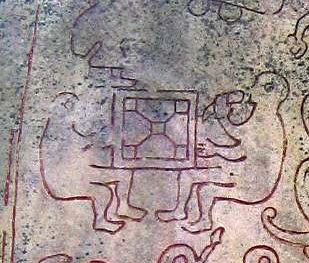 |
|
"Dec 30 (364) |
31 |
"Jan 1 |
2 |
3 |
4 |
|
INVISIBLY
CLOSE TO THE SUN: |
|
JUNE 7 |
8 |
9 (224 - 64) |
10 (161) |
11 |
12 |
|
Star-25 (Horse)
/
ANA-HEU-HEU-PO-5 (Pillar where debates were
held)
ALPHARD (The Horse) =
α
Hydrae
(142.3),
ω
Leonis (142.6),
τ¹
Hydrae (142.7) |
Al Tarf-7 (The End)
ψ
Velorum (143.3),
ALTERF =
λ
Leonis,
τ²
Hydrae (143.4),
ξ
Leonis (143.5)
*102.0 = *143.4 - *41.4 |
A
Hydrae
(144.1)
VEGA (α Lyrae) |
Creation of our present world
UKDAH (Knot) =
ι
Hydrae (145.4),
κ
Hydrae (145.5),
SUBRA =
ο
Leonis
(145.8)
ALPHEKKA
MERIDIANA
*104.0 = *145.4 - *41.4 |
5 Imix
9 Kumk'u
Rishu A.-13 (Head of the Lion)
ψ
Leonis (146.4),
RAS ELASET AUSTRALIS = ε Leonis
(146.6)
*105.0 = *146.4 - *41.4
|
VATHORZ PRIOR = υ Carinae
(147.9) |
|
UKDAH (THE
KNOT) |
 |
|
Aug 10 (40 + 182) |
11 |
12 (224) |
13 (408 - 183) |
14 |
15 (227
→
π) |
|
"June 30 |
"July 1 |
2 (183) |
3 |
4 |
5 |
Day number 408 can be regarded as the sum of 365 and 43:
|
BABYLONIAN ECLIPTIC
CONSTELLATIONS: |
|
26 |
Mahar sha hi-na
Shahū |
Western One in the
Tail of the Goat |
γ (Nashira)
Capricorni |
328.0 |
Febr 12 (408) |
|
27 |
Arkat sha hi-na
Shahū |
Eastern One in the
Tail of the Goat |
δ (Deneb Algiedi)
Capricorni |
329.8 |
Febr 13 (409) |
| |
|
0 |
1-iku |
Field measure |
τ
(Anunitum)
Piscium |
16.5 |
April 6 (461) |
| |
|
1 |
Mahrū-sha-rishu-ku |
Front of the Head of
Ku |
β (Sheratan),
γ (Mesarthim) Arietis |
27.4 |
April 17 (16 * 29½) |
|
2 |
Arku-sha-rishu-ku |
Back of the Head of
Ku |
α (Hamal)
Arietis |
30.5 |
April 20 |
Ba9-1 (341) will then follow 87 (= 3 * 29) days after
Nashira at the Full Moon in day 408 (February 12). 43 + 87 =
130 (May 10) = 495 - 365.
|
73 |
 |
 |
 |
 |
|
Ba8-36 (256 +
74) |
Ba8-37 |
Ba8-38 |
Ba8-39 (333) |
|
ki ruga o te ragi o te hetu |
eko te tagata rima oho |
mai tae atu i te tagata vero
i te puoko |
kua ka
ko te Raa |
|
Ka. Particle of the
affirmative imperative, of cardinal numerals, of
independent ordinal numerals, and of emphatic
exclamation, e.g. ka-maitaki! how nice!
Vanaga. Ká. 1. To light a fire in order
to cook in the earth oven (see umu): he-ká i
te umu, he-ká i te kai. 2. Figuratively: to
fire up the soul. To put oneself in a fury (with
manava): ku-ká-á toona manava he has
become furious. Vanaga. 1. Of T. 2. Imperative
sign; ka oho, ka tere, ka ea,
begone!; ka ko iha, a greeting T; ka
mou, hush; ka oho, goodbye. 3.
Infinitive sign; mea meitaki ka rava, a
thing good to take; ka harai kia mea, to
accompany. 4. A prefix which forms ordinals from
cardinals. 5. The dawning of the day. 6.
Different (? ke). Churchill.
Raa.
Sun; day; i te raá nei, today;
raá îka, good day for fishing. Vanaga. 1.
Sun. 2. Day. 3. Time. 4. Name of sub-tribe.
Fischer. Te manu
i te raá = comet. Barthel.
'... The substitution of the sun for the sail,
both of which are called ra or raa
in Polynesia, is a remarkable feature in Easter
Island art ... ' Heyerdahl 3. 1. The sun;
raa ea mai,
raa puneki,
sunrise; raa
tini,
raa toa, noon. P Mgv., Ta.:
ra,
the sun. Mq.: a,
id. 2. Day, date;
a raa nei a, to-day, now;
raa i mua,
day before. P Mgv., Ta.:
ra, a
day. Mq.: a,
id. Churchill. '... The chief
thus makes his appearance at Lakeba from
the sea, as a stranger to the land. Disembarking
at the capital village of Tubou, he is
led first to the chiefly house (vale levu)
and next day to the central ceremonial ground (raaraa)
of the island ...' (Islands of History)
Ta.:
toraaraa, to
raise up. Churchill 2 |
|
VISIBLE CLOSE
TO THE FULL MOON: |
|
AUG 25 (237) |
26 (120 +
118) |
239 = 223 -
64 + 80 |
224 + 16 =
240 |
|
ρ Lupi (221.0),
TOLIMAN = α Centauri
(221.2), π Bootis (221.8), ζ Bootis (221.9)
(*180) |
31 Bootis
(222.0),
YANG MUN (South Gate) =
α
Lupi
(222.1),
RIJL AL AWWA (Foot of the Barker) =
μ
Virginis
(222.5),
ο
Bootis (222.9) |
IZAR (Girdle) =
ε
Bootis
(223.0),
109 Virginis,
α
Apodis (223.3),
μ
Librae (223.8) |
Al Zubānā-14a (Claws)
/
Visakha-16 (Forked)
/
Root-3 (Badger)
ZUBEN ELGENUBI (Southern Claw) =
α
Librae
(224.2),
ξ
Bootis,
ο
Lupi (224.5) |
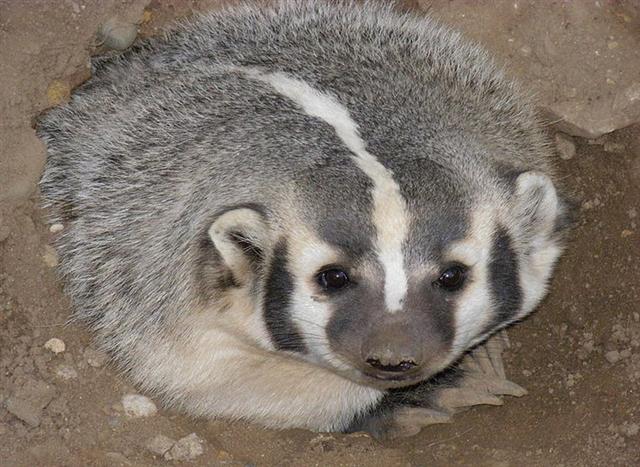 |
|
Oct 28 (301) |
29 |
30 |
31 |
|
"Sept 17
(260) |
18 |
19 |
20 |
|
INVISIBLY
CLOSE TO THE SUN: |
|
(346 + 74 =
420) |
FEBR 25 |
26 (57) |
27 |
|
*79 + *325 - *39 = *365
μ
Arietis (39.4), HEAD OF THE FLY = 35 Arietis
(39.6),
KAFFALJIDHMA (Part of a Hand) =
γ
Ceti,
θ
Persei (39.8)
*363.0
= *39.4 - *41.4 |
π
Ceti,
ο
Arietis (40.0),
ANGETENAR (Bend in the River) =
τ¹
Eridani,
μ Ceti (40.2),
RIGHT WING = 39 Arietis
(40.9) |
Bharani-2 (Yoni)
/
Stomach-17 (Pheasant)
π
Arietis (41.2),
MIRAM (Next to the Pleiades) =
η
Persei
(41.3),
BHARANI = 41 Arietis (41.4),
τ²
Eridani,
σ
Arietis (41.7)
*365.0 = 0h |
TA LING (Great Mound) = τ Persei (42.4)
*1.0 = *42.4 - *41.4 |
 |
|
April 29 (237
- 118) |
30 (120 = 360
/ 3) |
Beltane |
May 2 (366 /
3) |
|
"March 19 |
20 |
21 (80) |
22 |
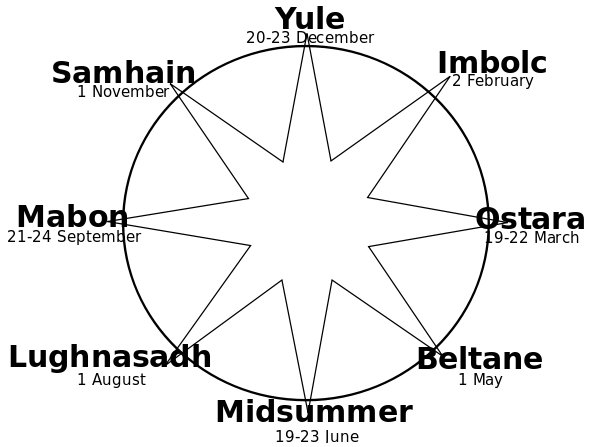 |
 |
 |
 |
 |
 |
 |
 |
|
Ba8-40 |
Ba8-41 |
Ba8-42
(336) |
Ba8-43 |
Ba8-44 |
Ba8-45 |
Ba8-46 |
|
kua haga i tona mea ke |
mai tae hua ia |
kua rere ko te manu |
ki te tagata -
tanu ki te tau
moko |
e manu pure ïa |
ki tona henua |
kua vero hia ïa mai |
|
Tanu.
To cover something in the ground with
stones or soil; to bury a corpse; tanu
kopú, to bury completely; this
expression is mostly used figuratively:
ka-tanu kopú te vânaga tuai era, ina ekó
mana'u hakaou, forget those old stories,
don't think of them again. Vanaga. To bury,
to plant, to sow seed, to inter, to implant,
to conceal; tagata tanukai, farmer;
tanuaga, burial; tanuaga papaku,
funeral; tanuga, plantation;
tanuhaga, funeral, tomb. P Pau.: tanu,
to cultivate. Mgv.: tanu, to plant,
to bury. Mq.: tanu, to plant, to sow.
Ta.: tanu, to plant, to sow, to bury.
Churchill.
... A une
certaine saison, on amassait des vivres, on
faisait fête On emmaillotait un corail,
pierre de défunt lezard, on l'enterrait,
tanu. Cette cérémonie était un point de
départ pour beacoup d'affaires, notamment de
vacances pour le chant des tablettes ou de
la priére,
tanu i te
tau moko o tana pure, enterrer la
pierre sépulcrale de lézard de sa prière
... |
|
VISIBLE
CLOSE TO THE FULL MOON: |
|
AUG 29 |
30 (242) |
31 |
SEPT 1 |
2 |
3 |
4 |
|
KOCHAB (Kakkab) = β Ursae Min.(225.0),
ξ Librae (225.7) |
KE KWAN (Cavalry Officer) =
β
Lupi
(226.3),
KE KWAN =
κ
Centauri (226.4), ZUBEN ELAKRIBI (Claw of
the Scorpion) =
δ
Librae
(226.8),
π¹
Oct.
(226.9) |
ω
Bootis (227.2),
NEKKAR (Herdsman) =
β
Bootis
(227.3),
σ
Librae (227.5),
π²
Oct.
(227.7),
NADLAT (Mean Little Ones) = ψ Bootis
(227.8), π Lupi (227.9) |
15h (228.3)
ZUBEN HAKRABIM = ν Librae
(228.3), λ Lupi (228.9) |
ω
Oct. (229.3),
ι
Librae (229.6),
κ
Lupi (229.7),
ζ
Lupi (229.8) |
Al Zubānā-14b (Claws)
χ
Bootis (230.3),
PRINCEPS =
δ
Bootis
(230.6),
ZUBEN ELSCHEMALI (Northern Claw) =
β
Librae
(230.8) |
μ
Lupi,
γ
Tr. Austr.
(231.3), ο Librae (231.8) |
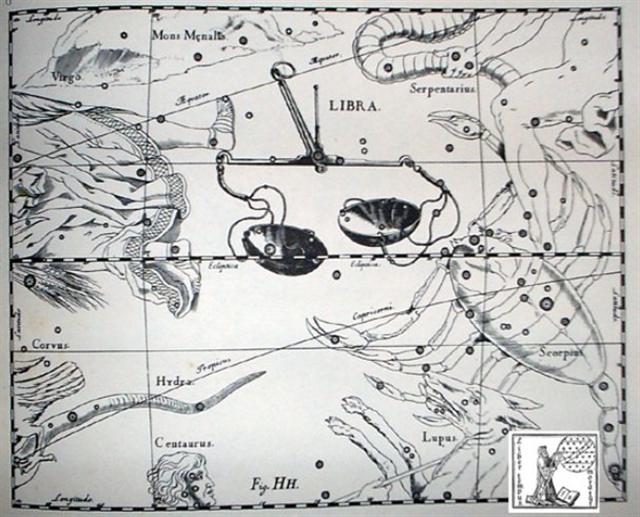 |
|
Nov 1 |
2 |
3 |
4 (308) |
5 |
6 |
7 |
|
"Sept 21
(264) |
Equinox |
23 |
24 |
25 |
26 |
27 |
|
INVISIBLY
CLOSE TO THE SUN: |
|
FEBR 28
(59) |
MARCH 1 |
2 |
3 |
4 |
5 |
6 (65) |
|
ρ
Arietis (43.0),
GORGONEA SECUNDA =
π
Persei
(43.5),
ACAMAR (End of the River) =
θ
Eridani
(43.6),
ε
Arietis (43.7),
λ
Ceti (43.9)
DENEBOLA (β Leonis) |
MENKAR (The Nose) =
α
Ceti
(44.7)
|
3h (45.7)
GORGONEA TERTIA =
ρ
Persei
(45.1),
ALGOL (The Demon) =
β
Persei
(45.9) |
ι
Persei (46.1),
MISAM (Next to the Pleiades) =
κ
Persei
(46.2),
GORGONEA QUARTA =
ω
Persei
(46.7),
BOTEIN (Pair of Bellies) =
δ
Arietis
(46.9) |
ζ Arietis (47.7) |
ZIBAL (Young Ostriches) =
ζ Eridani (48.0),
κ
Ceti (48.9) |
τ Arietis (49.7) |
|
May 3 |
4 |
(125 = 61
+ 64) |
6 (126) |
7 |
8 |
9 (129) |
|
"March 23 |
24 |
(84 = 125 - 41) |
26 (85) |
27 |
28 |
29 (88) |
 |
At a certain time in the year they buried (tanu) the 'dead
lizard'. This custom seems to have originated somewhere
north of the equator, presumably when it had been the day after
the Julian spring equinox according to the era of
Bharani (in "March 25, 3-25)
- which was in the day after the Sun had risen together with
the Medusa star (Algol). There were 126 days (→
May 6) from the last item (= the Virgin's Girdle =
Spica) in the Babylonian list of
Ecliptic Constellations to Nashira at the beginning
of the list.
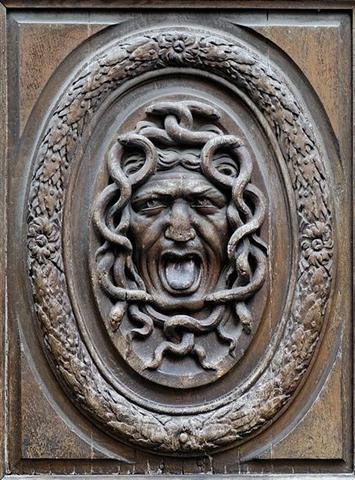
And south of the equator (on Easter Island) the event
ought currently to have taken place in November 4, i.e.
in the day after the Medusa Head had been at the Full Moon.

|






























